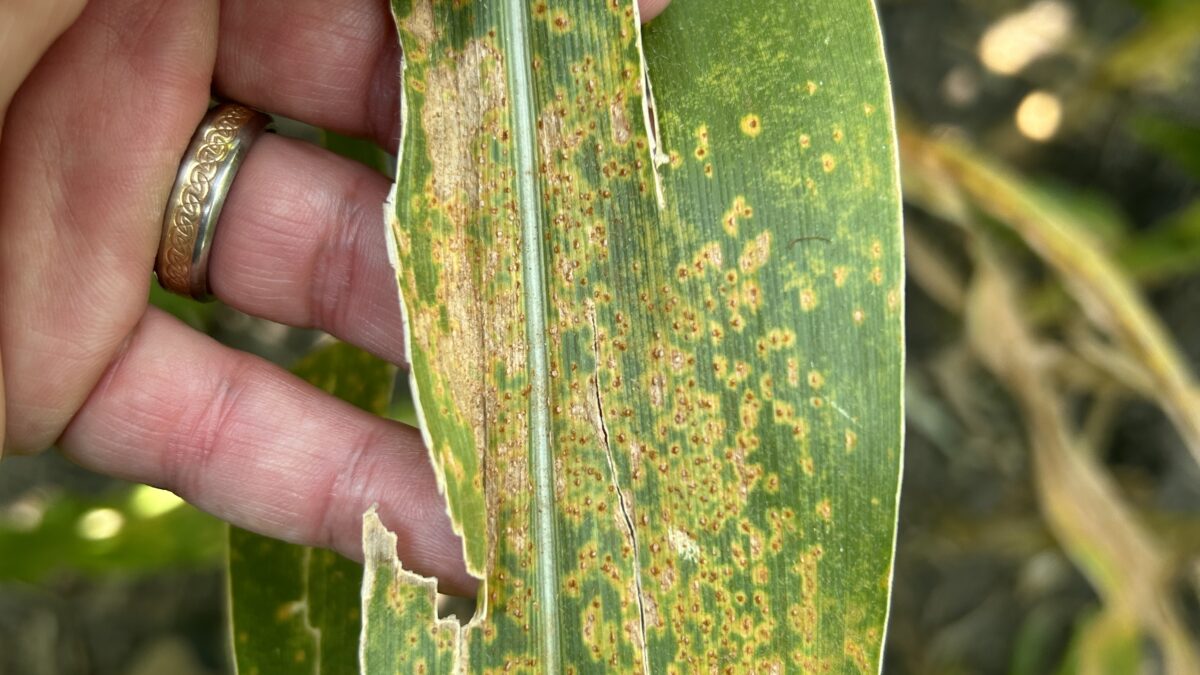Southern Corn Rust: A One-Year Impact?


Southern corn rust was observed in multiple locations in our growing region in 2024.
In July 2024, reports of southern corn rust began trickling in. By late August and September, it spread like wildfire, aided by wet, humid, cloudy and calm weather conditions.
I observed southern corn rust in every cornfield I visited after Sept. 9. It was widespread, appearing everywhere—from Warren, Minn., to Fessenden, N.D., and extending southward.
Many pathologists were surprised to see the rust reach this far north. However, its widespread presence made it easier to identify later in the growing season.
How to Identify
Lesions caused by southern corn rust have somewhat similar red pustules seen in common rust but with a distinct chlorotic halo surrounding them. Unlike common rust, where the red pustules are visible through the underside of the leaf, southern rust shows chlorotic tissue on the bottom of the leaf.

These images highlight the characteristic raised, orange-to-reddish-brown pustules of southern corn ruse (Puccinia polysora), primarily found on the upper leaf surface. This aggressive fungal disease thrives in warm, humid conditions and can spread rapidly, impacting yield potential. Early detection and timely fungicide applications are key to effective management.
Key Management Strategies
1. Southern rust does not overwinter in our region—or even in the United States. It typically arrives via winds from the Gulf of Mexico. Therefore, I wouldn’t worry too much about its recurrence.
2. I don’t believe we experienced any major yield losses in 2024. However, in plants heavily affected by the rust, there may have been some loss in test weight.
3. The 2024 season was an anomaly. The early appearance of infections in July is not typical and doesn’t raise immediate concern for 2025. That said, if we observe southern rust as early as July again, it will be worth monitoring closely.
4. Fungicides are highly effective. Given the rapid spread of the rust in early September, spraying in July or August might be necessary if early infections occur.
5. So, am I worried about 2025? No, I’m not. However, we need to remain vigilant in the years ahead.











